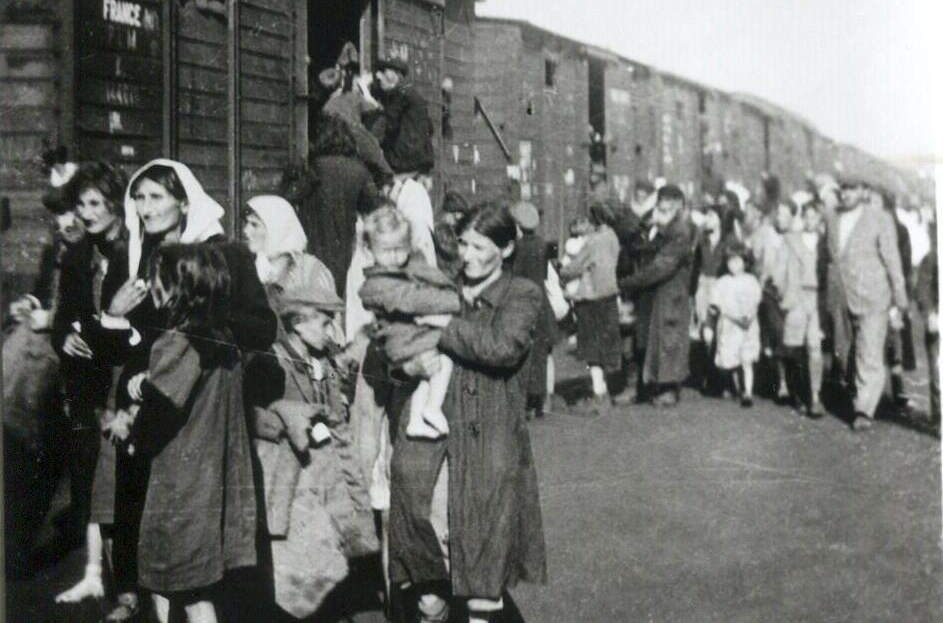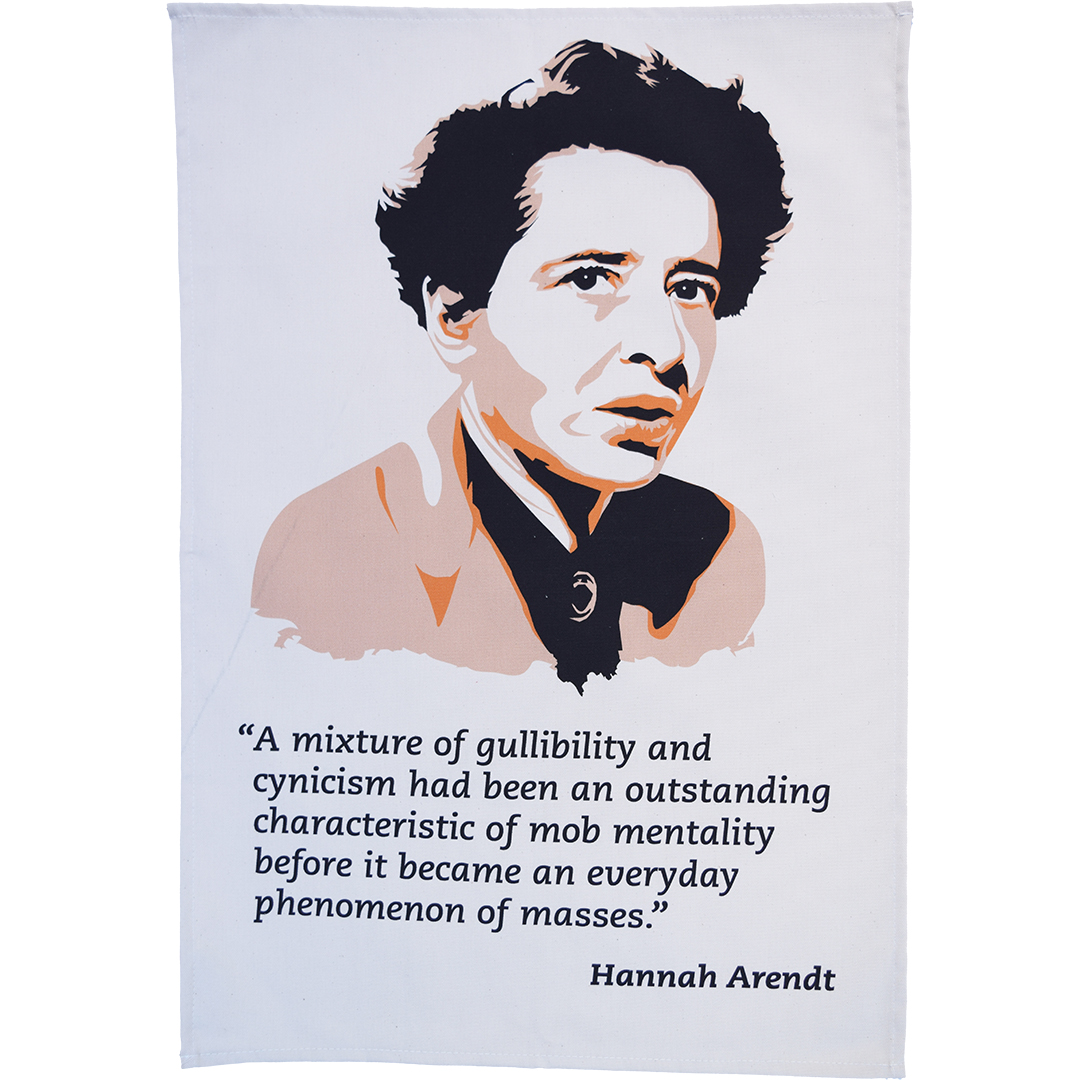The Treblinka Uprising
Posted by Pete on 2nd Aug 2023

On this day in 1943, Jewish prisoners rose up against the guards at Treblinka Extermination Camp
At the beginning of May 1943, a Jewish fighter captured by the Nazis after the Warsaw Ghetto Uprising was transported to the Treblinka Extermination Camp.
He knew his fate. Despite Nazi attempts at secrecy, the ongoing genocide of the Jewish people of Europe was common knowledge among Jews in Poland by this point.
But the Warsaw veteran would not die as his Nazi captors intended. En route to Treblinka, he smuggled a hand grenade onto the train. Once he reached the undressing area at the death camp, he detonated it.
Anti-Nazi resistance was widespread in Europe, from the students of The White Rose to the fighters in the Warsaw Ghetto
Click to view our White Rose tea towel
Treblinka Extermination Camp, situated in a forest north-east of Warsaw, had been set up in July 1942.
It was a centrepiece of Hitler’s genocide against the Jewish and Romani peoples of Europe.
During the year and a half that Treblinka was operational, between 700,000 and 900,000 Jews and 2,000 Romani were murdered there.
More people were murdered at Treblinka than at any other Nazi death camp apart from Auschwitz-Birkenau.
But even under the weight of such limitless evil, the human will to be free endured.
At Treblinka, Jewish prisoners had been organising since the start of 1943. They were planning a rebellion.
Despite being an early supporter of Hitler, Niemöller emerged as an outspoken opponent of the regime after 1934, spending the last seven years of Nazi rule in concentration camps
Click to view our Martin Niemöller tea towel
A tiny minority of Jewish prisoners were not murdered on arrival at Treblinka, but instead kept alive for a time to work as slave labour, maintaining the camp under the watch of SS guards.
Among this small group, a conspiracy was hatched.
A secret committee led by Julian Chorążycki began to organise an uprising. The plan was to seize control of the camp grounds for long enough to allow some of the prisoners to escape into the surrounding forests.
Chorążycki was a medical doctor, who had served as a Captain in the Polish Army at the start of the Second World War. He now put his leadership skills to work in the Treblinka hellscape, for the cause of liberation.
But in April, the Nazi administration began to close in on Chorążycki. And on 19 April 1943, to avoid giving away the planned rebellion under torture, Chorążycki fatally poisoned himself.
Chorążycki was then replaced in command by Berek Laicher, another doctor and Polish army officer.
The uprising was planned for 15 June, but this had to be delayed when the Warsaw Ghetto fighter blew up the Treblinka undressing room in early May. The guards were on high alert.
Instead, the Treblinka rebels chose 2 August 1943 for the uprising – eighty years ago today.
Born to a Jewish family in Germany in 1906, Arendt fled Nazi Germany in the 1930s and went on to become one of the leading political theorists of the twentieth century
Click to view our Hannah Arendt tea towel
It was a Monday. Most weeks at Treblinka, gassing was suspended on Mondays. Many of the SS guards were away frolicking in a nearby river.
During this window of opportunity, in the middle of the afternoon, no fewer than 700 Jewish inmates rose up against the remaining guards.
Covertly supplied with guns and grenades stolen from the Nazi arsenal, they burned down camp buildings and blew up petrol tanks.
But the remaining Nazi guards still had the advantage of machine guns, barbed wire fences, and watch towers.
Most of the Jewish insurgents were shot down inside the camp limits. But 200 escaped into the surrounding countryside.
Of these rebels, half were killed as local Nazi forces were mobilised to pursue them. But almost 100 escaped.
The material damage they had done to Treblinka, coupled with the Nazis’ fear of further uprisings, led to the death camp being shut down in October 1943.
Fearing that the genocide perpetrated at Treblinka would be exposed to the world as the Soviet Red Army advanced westward, the Nazi administration tried desperately to destroy all evidence that nearly a million people had been murdered at the site.
But their coverup attempt failed. Treblinka became known to the world as a central chapter in the history of the Holocaust.
And it is also a part of the history of Jewish resistance to the Holocaust.
From the Warsaw Ghetto insurgents to the Treblinka uprising, Jewish people across occupied Europe took up arms and fought against the Nazi genocide, without even hope of victory.



